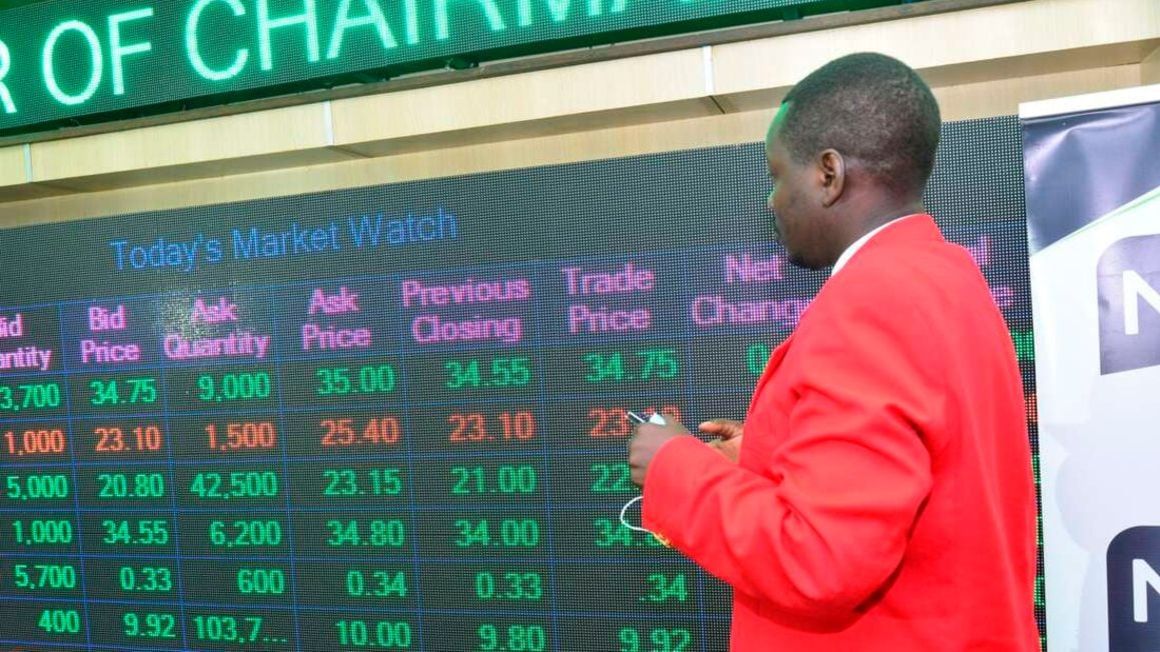
A securities trader at Nairobi Securities Exchange (NSE) trading floor at the Exchange building in Nairobi. FILE PHOTO | NMG
The announcement by the US Federal Reserve that it expects to cut its interest rate
three times in 2024 signals better times ahead for the Nairobi Securities Exchange (NSE), which has been suffering from capital flight on account of high rates in the US.The shilling, alongside other global currencies, is also looking at potential gains against the dollar, which is expected to ease back as the attractiveness of US assets falls.
The Fed progressively raised its rate from near zero in March 2022 to the current target range of 5.25-5.5 percent (5.3 percent average) in response to rising US inflation, which climbed to a 40-year high in the second half of 2022.
Read: US rate hike inflicts pain on Kenyan investors, firms
In its latest meeting on Wednesday, it held the rate steady for a third straight time while projecting three cuts next year, expected by market analysts to be up to 1.5 percentage points.
The sharp rise in returns in the US over the period saw acceleration of outflows from emerging and frontier markets like Kenya, while the dollar gained in value globally as investors sought the greenback to invest in US assets.
Some of these flows are likely to be reversed once US rates come down —which will increase the attractiveness of smaller market assets for investors.
“Our view is that, while there may be still some further turbulence in markets to come in the near term as the US economy slows and major European economies slip into recession, the outlook for risk sentiment is better than we previously anticipated,” said Jonas Goltermann, deputy chief markets economist at London-based Capital Economics.
“As such, we expect the dollar to ease back gradually over the course of next year as the Federal Open Market Committee shifts towards easing, Treasury yields fall further and expected interest rate differentials move against the dollar.”
In the Kenya market, the NSE has over the last two years taken a hit from the foreign investor exits, recording cumulative net outflows of Sh44.5 billion between January 2022 and November 2023.
These exits have mainly hit the large blue chip stocks favoured by foreigners, and which account for the bulk of the market’s investor wealth and index weight.
Since the beginning of 2022, the NSE has shed Sh1.14 trillion in investor wealth or market capitalisation to stand at Sh1.45 trillion presently, while the NSE 20 Share Index has retreated by 21 percent to 1501.16 points. The NSE All Share Index has in the period fallen by 44 percent to 93.05 points.
For the shilling, a reversal of foreign portfolio outflows (and the resultant decline in dollar demand) will help the currency, which has this year shed 19.5 percent against the dollar.
Read: Why NSE has been ranked the worst performing in Africa
The Central Bank of Kenya (CBK) in its monetary policy committee meeting of December 5 sought to help stem these outflows by raising its base rate by 200 basis points to 12.5 percent, which it said would make local assets more competitive in the eyes of external investors and thus attract dollar inflows.
The CBK decision, when combined with the Fed cutting its rate, will thus reduce the premium that US assets have been enjoying over Kenyan ones.
→ cmwaniki@ke.nationmedia.com




No comments :
Post a Comment